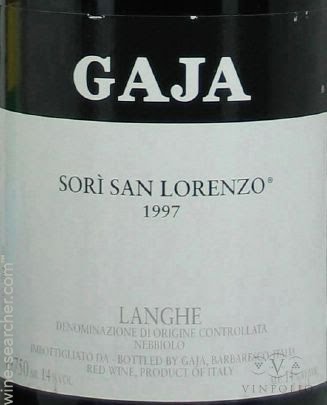Angelo Gaja and his daughter Gaia Gaja.
Gaia now runs the daily operations of the Gaja winery with her sister Rossana
Gaja
“Cabernet has a strong personality, open, easily understood and dominating. If Cabernet were a man, he would do his duty every night in the bedroom, but always in the same way. Nebbiolo, on the other hand, would be the brooding, quiet man in the corner, harder to understand but infinitely more complex.”
- Angelo Gaja
The story of Angelo Gaja has the struggles and triumphs of a classic hero. In 1940, as the great-grandson of Giovanni Gaja, Angelo was born into a blossoming wine business. The late Giovanni Gaja had started the Gaja winery in 1859 to complement his tavern in Barbaresco. The wines were received well in the early 1900s, and following the Second World War, Giovanni Gaja made significant expansions in his vineyard holdings in the region.
This was the time into which Angelo was born. With degrees in wine making at the Enological Institute in Alba and at the University of Montepelier in France and a degree in economics from the University of Turin, Angelo entered the family business in 1961, at the age of 21. Even then, the Gaja winery owned many plots within Barbaresco, and for years, the family had dutifully followed the traditional winemaking practices in this Piemonte region and had seen much success.
But the young winemaker had his own ambitions. In 1961, shortly after his arrival, he began his first experiments with green harvest. In 1967, he began single vineyard production with Sori San Lorenzo, which was unusual at the time in Italy. In 1970, he brought on the eminent oenologist Guido Rivella to take his efforts one step further. In 1975, Gaja introduced malolactic fermentation to the region for the first time, implementing the use of French barriques and bringing in thermos-controllable fermentation equipment and French grape varieties. In 1978, he goes on to plant a prime Nebbiolo site in the heart of Barbaresco with Cabernet Sauvignon. These efforts were met with fierce resistance, both from within the family – his father - and from the traditionalists, but Angelo held firm to his belief that only by succeeding on terms accepted by the rest of the world, could he draw attention to the great wines made from Italy’s indigenous grapes.
As a result, Gaja's winemaking practices are just as complex as its history. While considered a modernist in a traditionalist region, Gaja still restricts the use of new oak and ferments his wines for up to 30 days (instead of the modernist 5-day fermentations). Moreover, although Gaja employs barriques (one third new oak) for the first year of aging, the process is finished in the traditional big botti – some of which can be 120 years old.
Having inspired generations of winemakers, including Renato Ratti and Aldo Conterno, now at 77 years old, Angelo Gaja has passed on the daily responsibilities of running the firm to his daughters, Gaia and Rossana.
Gaja Barbaresco Sori San Lorenzo 1997
Langhe, Piemonte, Italy
Nebbiolo 100%
Fragrant & Structured
Pairs with Red Meat, Game, Savory
Via Torino, 18, 12050 Barbaresco CN, Italy

